Leonor Antunes: a line that lies in between
Leonor Antunes: compounds - tangents - joins
There is something deliberately ambiguous in the mismatches and unlikely combinations of structures and materials that Leonor Antunes creates. In a single installation she brings together partitions, hanging pieces, as well compound structures that incorporate competing elements into a single artwork. Forms and forming elements – like a knot or a fold or a joint – repeat and proliferate across the space. It is often hard to reconcile such opposing poles in the work, one pulling towards disintegration or separation, the other towards integration and connection. Without the former, the elements that she chooses to work with from a modernist lexicon would not be transformed; without the latter, there is no artwork to show for it. But the friction is always there, never easily resolving one way or the other. The whole is integral without ever being entirely integrated. It’s as if almost every element is hyphenated with another, not only in the individual pieces but in the installations that occupy the whole space of the gallery. Over time, this has become a cumulative practice, with its own internal logic and capacity to loop back on itself as well as to take tangents and move in new directions.
Antunes’ work is often discussed in terms of the historical figures that it references – and notably the way she draws upon and makes material a host of women artists and designers that have been side-lined from mainstream art histories. This is undoubtedly important, but I would say only the starting point for the work, not the meaning of the work itself. One of the triggers for her current exhibition was a photograph of the first Sao Paulo Biennale of 1951 showing Sophie Taeuber-Arp’s work exhibited on the wall behind two workers cleaning the floor. Sophie Taeuber has recently become one of her interlocutors, added to her own imaginary pantheon that includes Mira Schendel and Charlotte Perriand as well as many lesser-known figures. But it’s equally important to take note of the fact that in many of her titles she uses the word ‘discrepancy’, as in Discrepancies with M.S. Not only is the reference cryptic, almost like an private ‘note to self’, but the sense of discrepancy – where two sets of facts or figures do not add up and leaves something unexplained – is surely key to the work, not only in its relationship to individual historical figures but also to the more complex transnational connections and divisions within the modernist project, understood not as monolithic but as fundamentally plural and ‘discrepant’. The historical moment represented by the Sao Paolo Biennales of the early 1950s is precisely such a pivotal point within that project.
Antunes’ additive method does not reproduce existing historical narratives but explores imaginary and counterfactual possibilities that often begin in its silences and backwaters. If at one level there are explicit allusions to a detail from Charlotte Perriand’s design for her partner’s apartment in Brazil in a number of recent works, then these are put in play with hanging beadwork strips that recall Sophie Taeuber’s geometric abstract lexicon. Together, the new series of wall-hung works act upon each other to make something very much stranger than the sum of their parts. That is to say, their elements confound as well as compound.
It's striking that in these recent works, Antunes returns to the wall – a surface she has used in the past but in a very reduced way. In so doing she makes the wall strange again, as if it has been necessary for sculpture to move away and come back again as a different kind of object, and to alienate itself in the process. After all, the Sophie and Charlotte works attach to the wall as a picture might, but behave like a compound object, held up by the rigid wooden structure but protruding out falling downwards, in a cascade of chromatic geometric strips.
The artist has been preoccupied with a language of falling for a long time, as if what she’s interested in is not the ‘form’ in form, that can be kept in check, but in that which exceeds any given structure – like the loose ends that dangle almost touching or touching the floor from a hanging piece. Building on a history of hanging sculpture, particularly the radical tactics of Lygia Clark’s Trepantes and Mira Schendel’s Droguinhas, Antunes’s work activates on a dramatic scale the gravitational fall of a range of what is by now startling range of different materials, from metal rods, to rope, to leather straps and beaded strips. As artworks, they seem to make themselves, as they drop and arrange themselves into different configurations. Such accidents and contingencies are vital component parts of Antunes’ process – and as much a part of it as the geometric or constructive elements. Using the technique of beadwork, for example, small triangular elements yield to gravity and undulate unevenly – as if to encapsulate this as a miniature mise-en-abyme.
For the spectator, however spare her installations can be, a sense of being enclosed in a forest of seemingly free-falling vertical lengths of leather is the opposite of what might have been traditionally called ‘free-standing sculpture’, situated on the floor and rising upwards. For Antunes, on the other hand, the floor functions very differently, and is activated as part of the work. The floor is now far from neutral but itself subtly material and supple. Made of Lino, Antunes’ floor takes the elements of a painting by Sophie Taeuber that was shown in 1951 at the Biennale and rearranges them on the ground. A number of translations are involved in this process, that are material, spatial as well as temporal. But one of the main things that Antunes reveals in the process is the intimate relationship between a modernist painting and a floor-plan. You could see the splicing together of these different viewing positions as another kind of compound effect at work in the installation, which end up creating a massive disturbance to the sense of the scale of things as we perceive them in space. Turning a painting into a ground plan is a translation of a kind, but one which moves across time periods and geographies in complex ways.
Leonor Antunes has talked about her interest in the idea of the parasitic, as if the artwork were necessarily always in some kind of parasitic relationship to its precedents. Reflecting on this process becomes a part of what the work is about. As we look at the series of wall pieces Sophie and Charlotte the sense of reciprocal dependency is particularly compelling. One is reminded of the famous photographs of Lygia Clark’s Trepantes or climbers hanging in trees and looking like parasitic indigenous forest plants. The idea that one organism is at once an entity in itself and entirely dependent on another – which in most contexts is a contradiction in terms – defines the parasitic plant which blurs traditional categorisations and divisions between species. The prefix ‘para’ means ‘besides’, and the parasitic plant is both attached to its host, as the artwork clings to the wall, at the same time as it contributes and is dependent on its wider eco-system. In a more general way, Leonor Antunes likes to work in the gaps between different species, by latching on and living in the space of another, in order to make work that is absolutely her own. In this way, she animates her historical precedents, just as she is animated and fuelled by their histories. This constant oscillation between attachment and detachment has a certain volatility in her large-scale installations but can also be detected in the intricacy of the smallest knot or join in any given structure. Even when these multiple fastenings are fairly precarious and loose, or when they threaten to spill out beyond the limits of the very compound structures they supposedly hold together, they are the touchpaper of her entire body of work.
Briony Fer

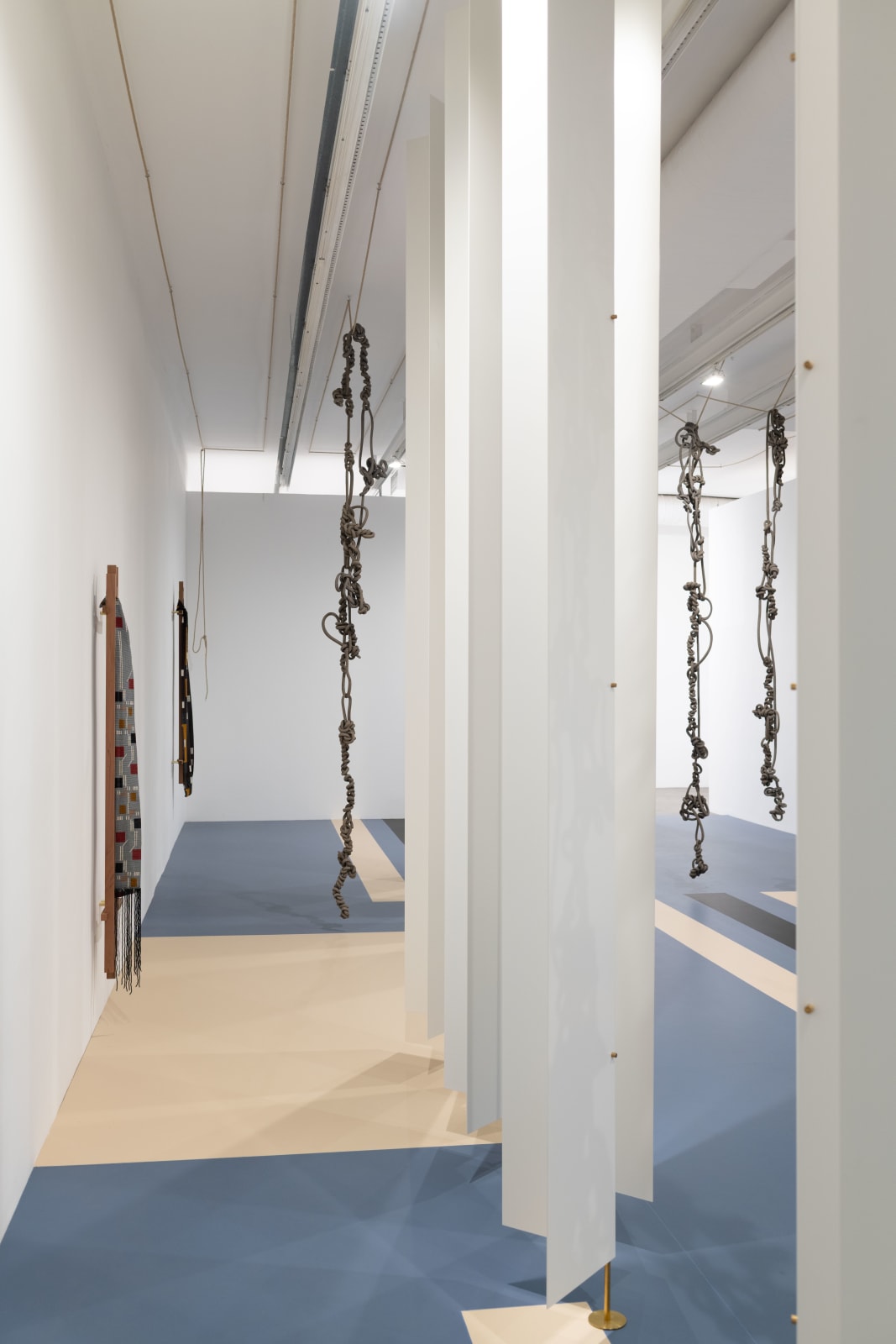
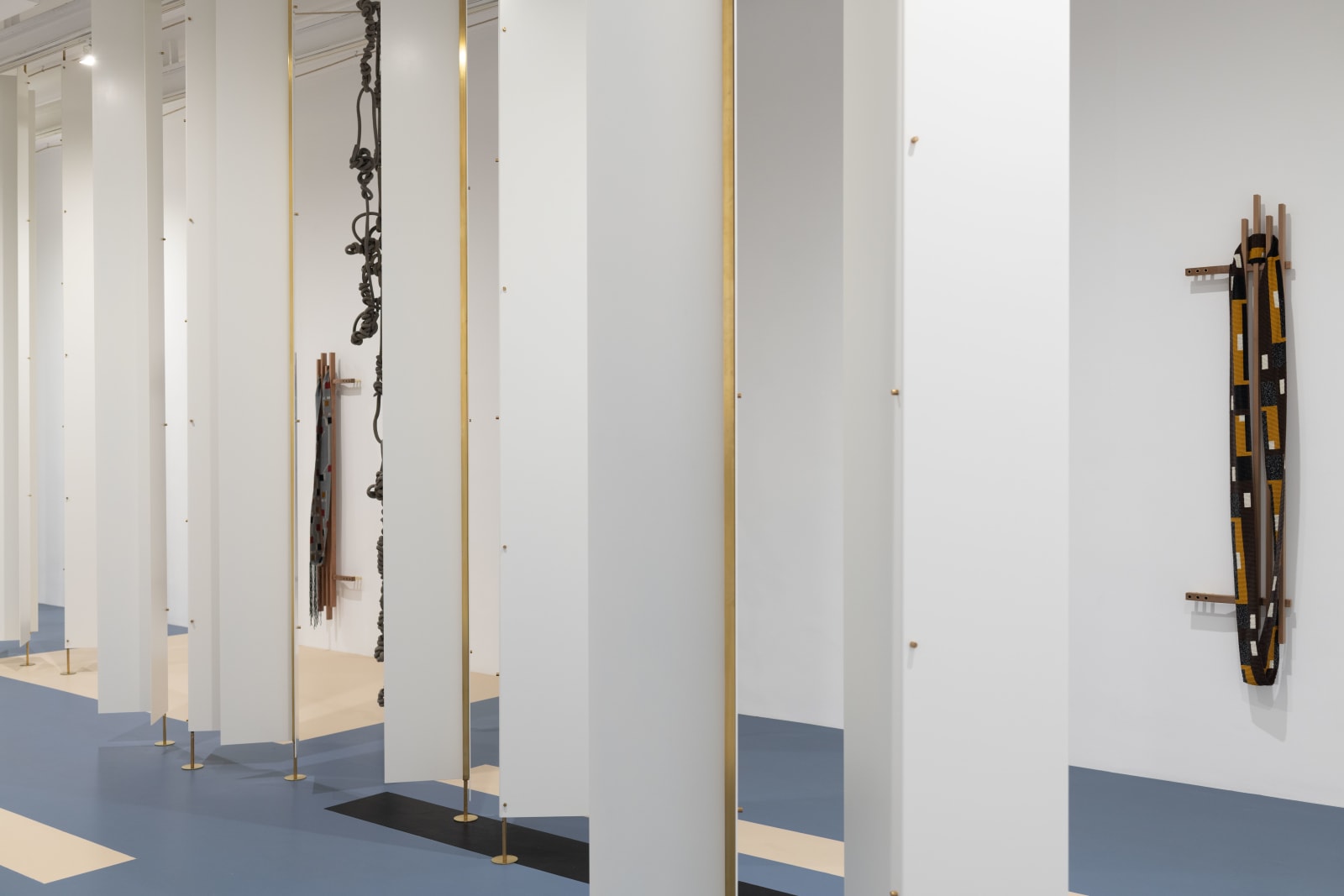
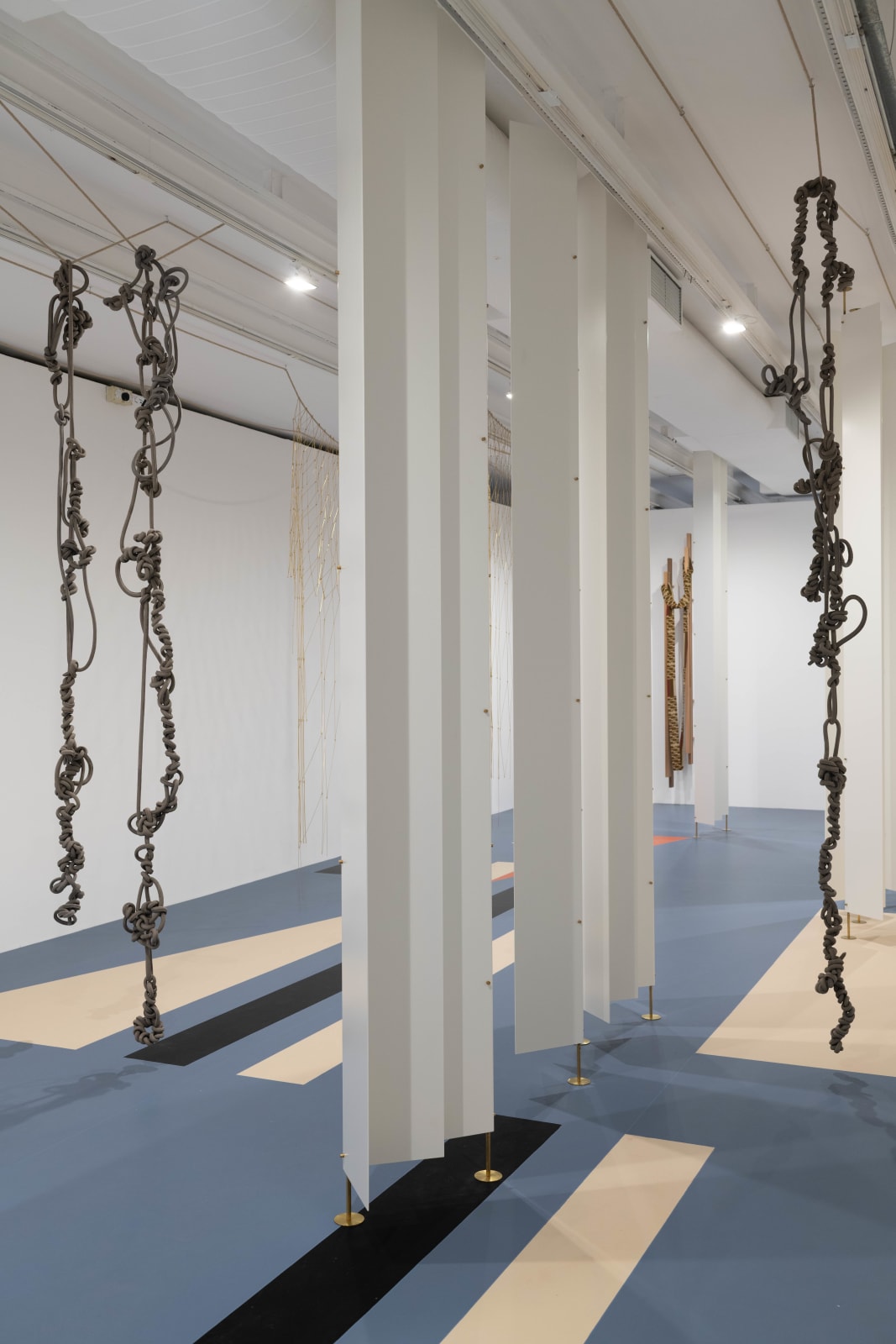
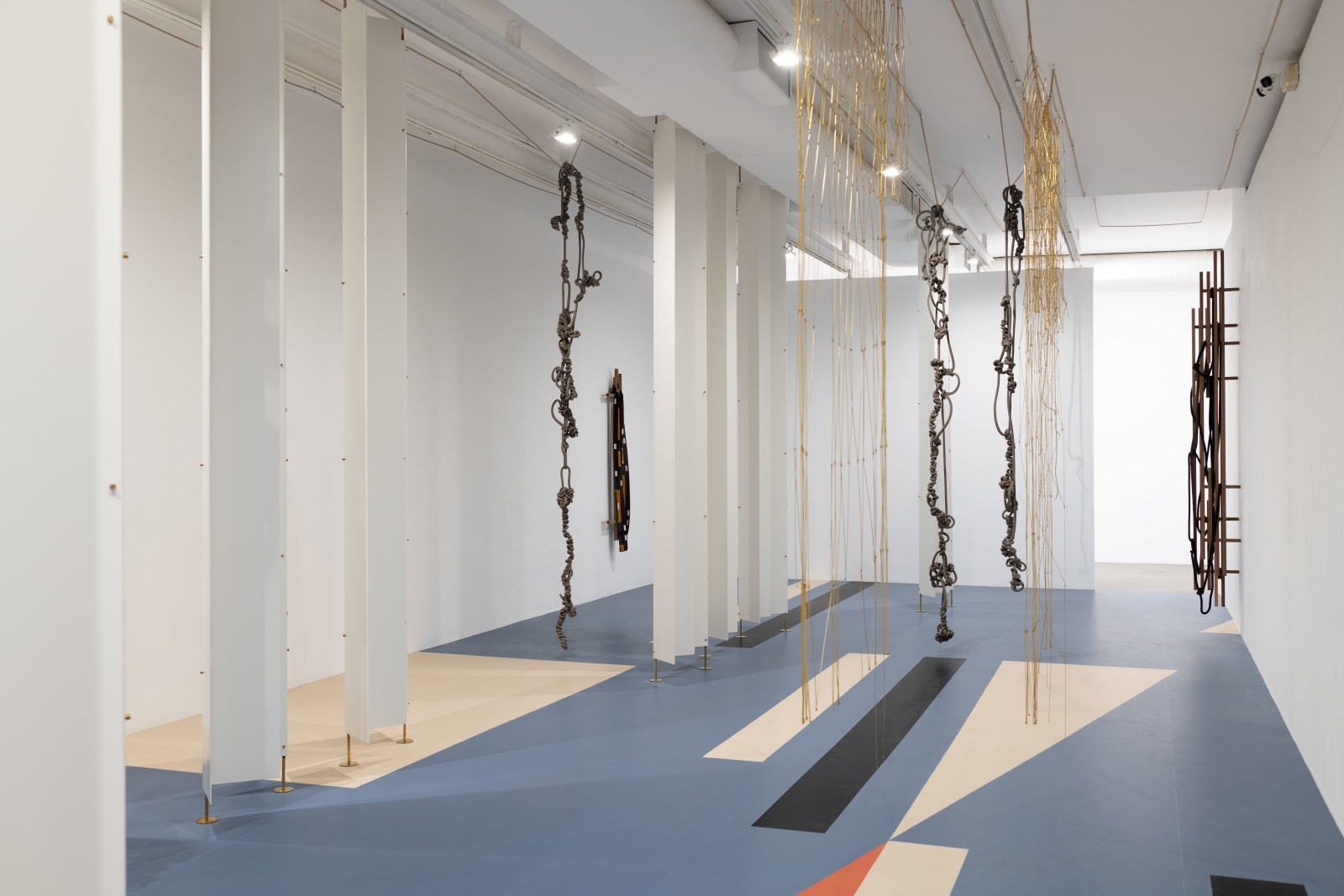
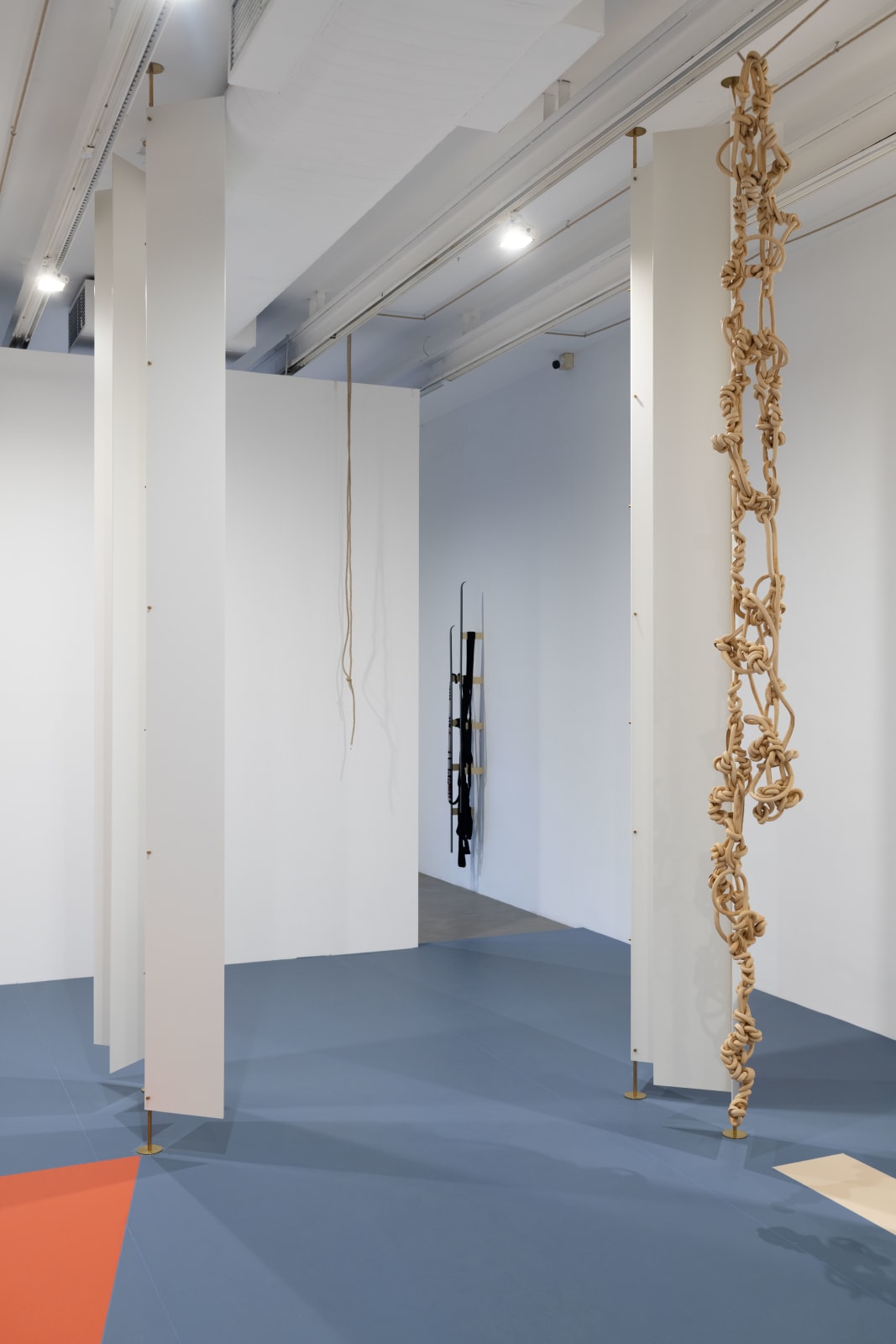
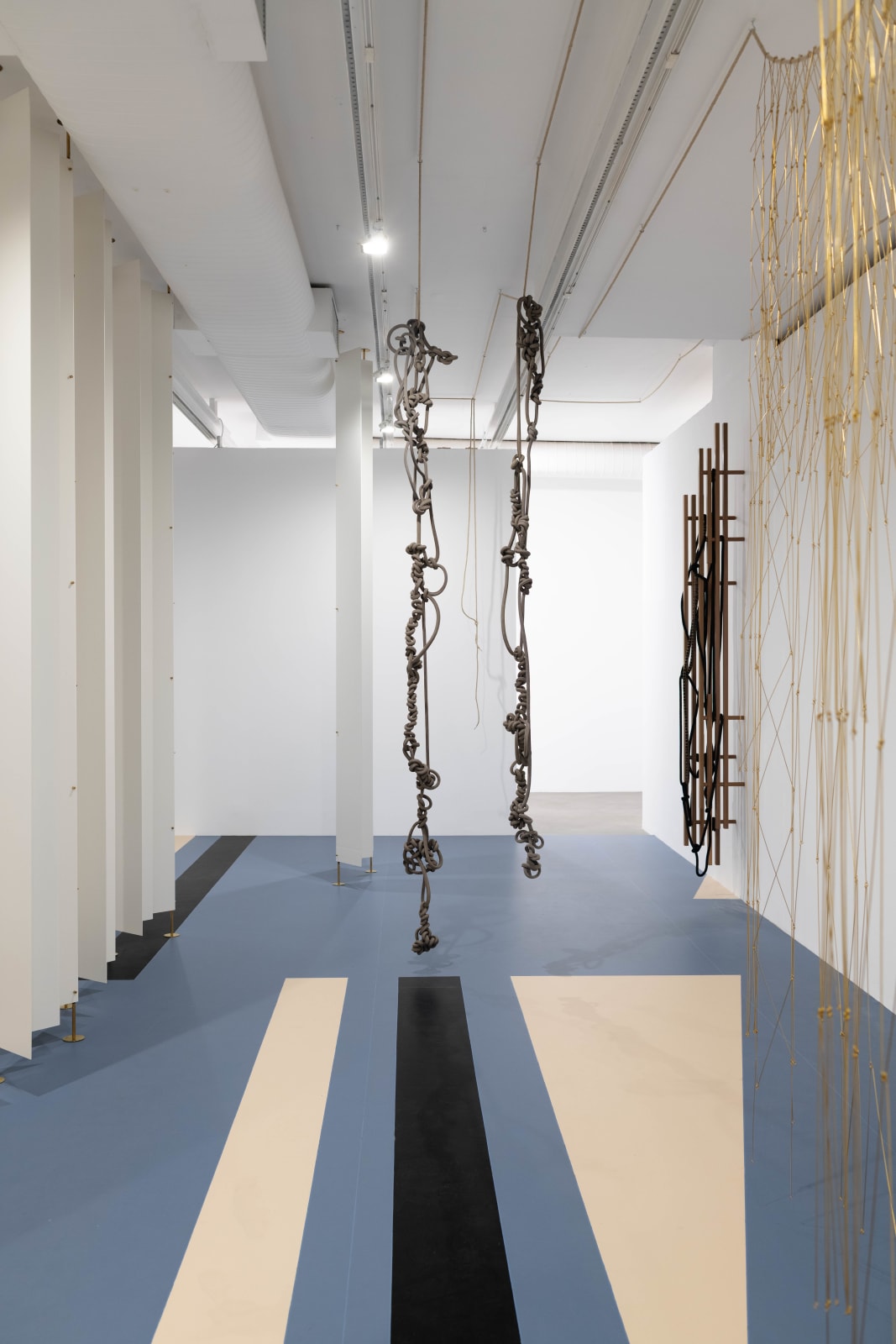
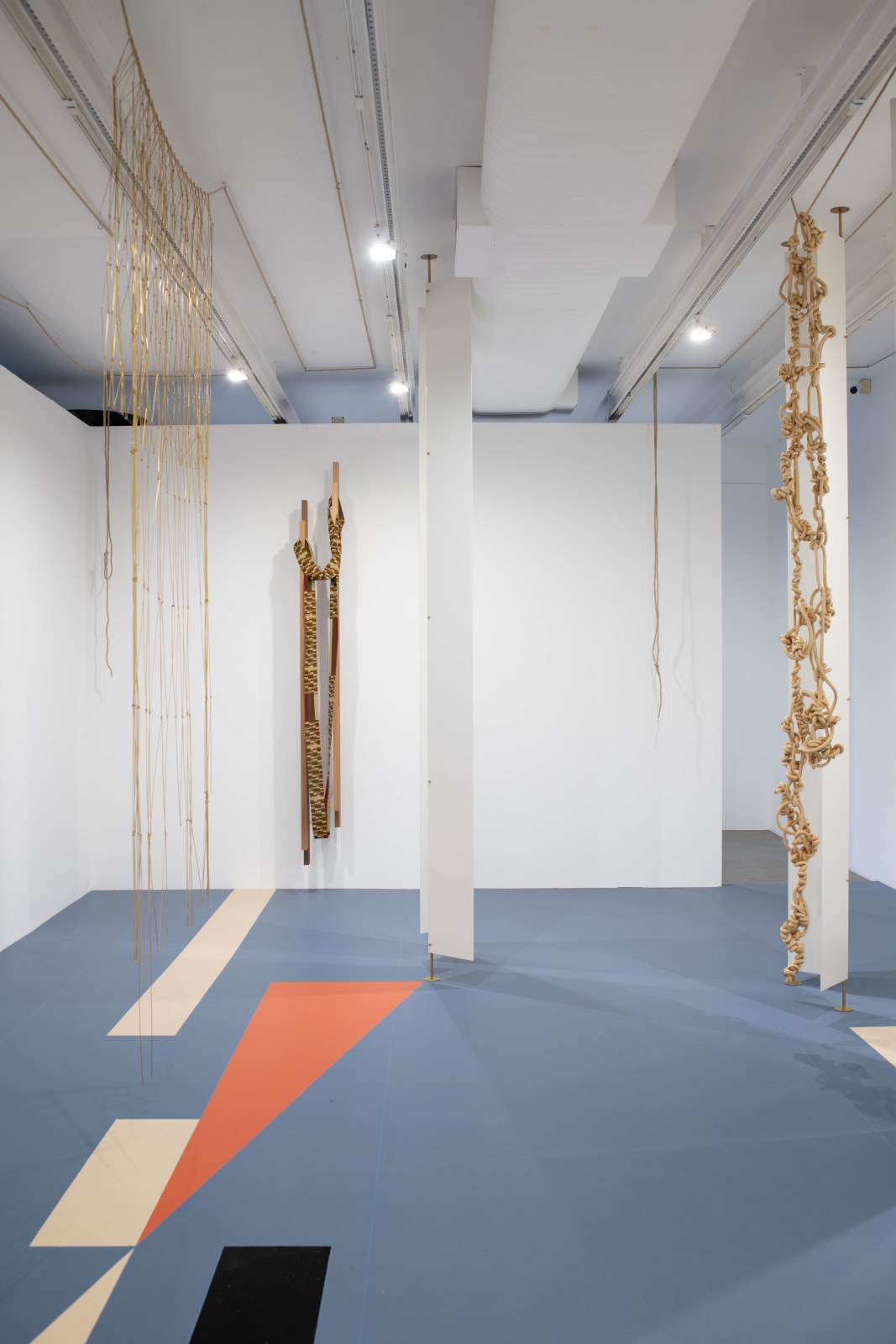
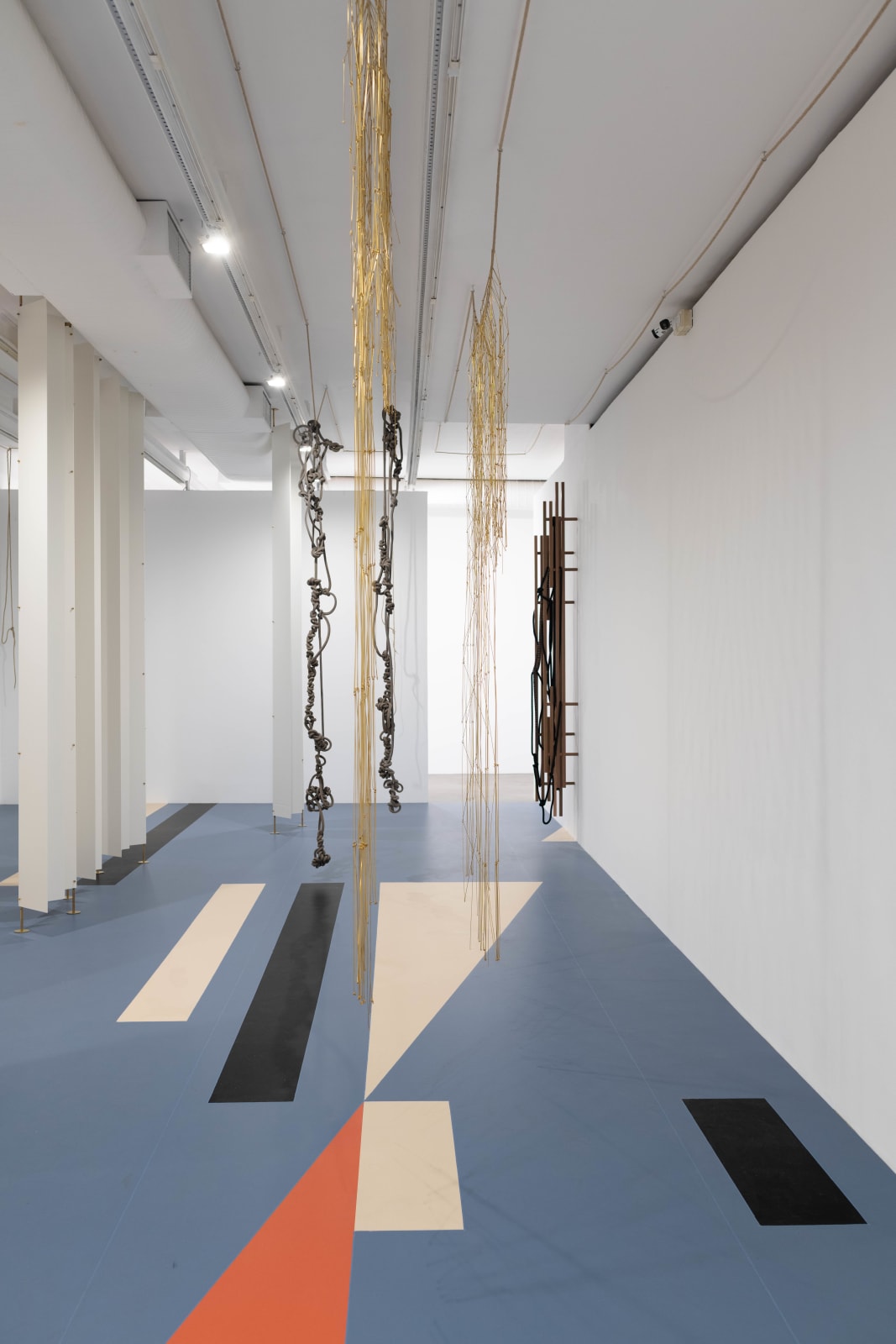
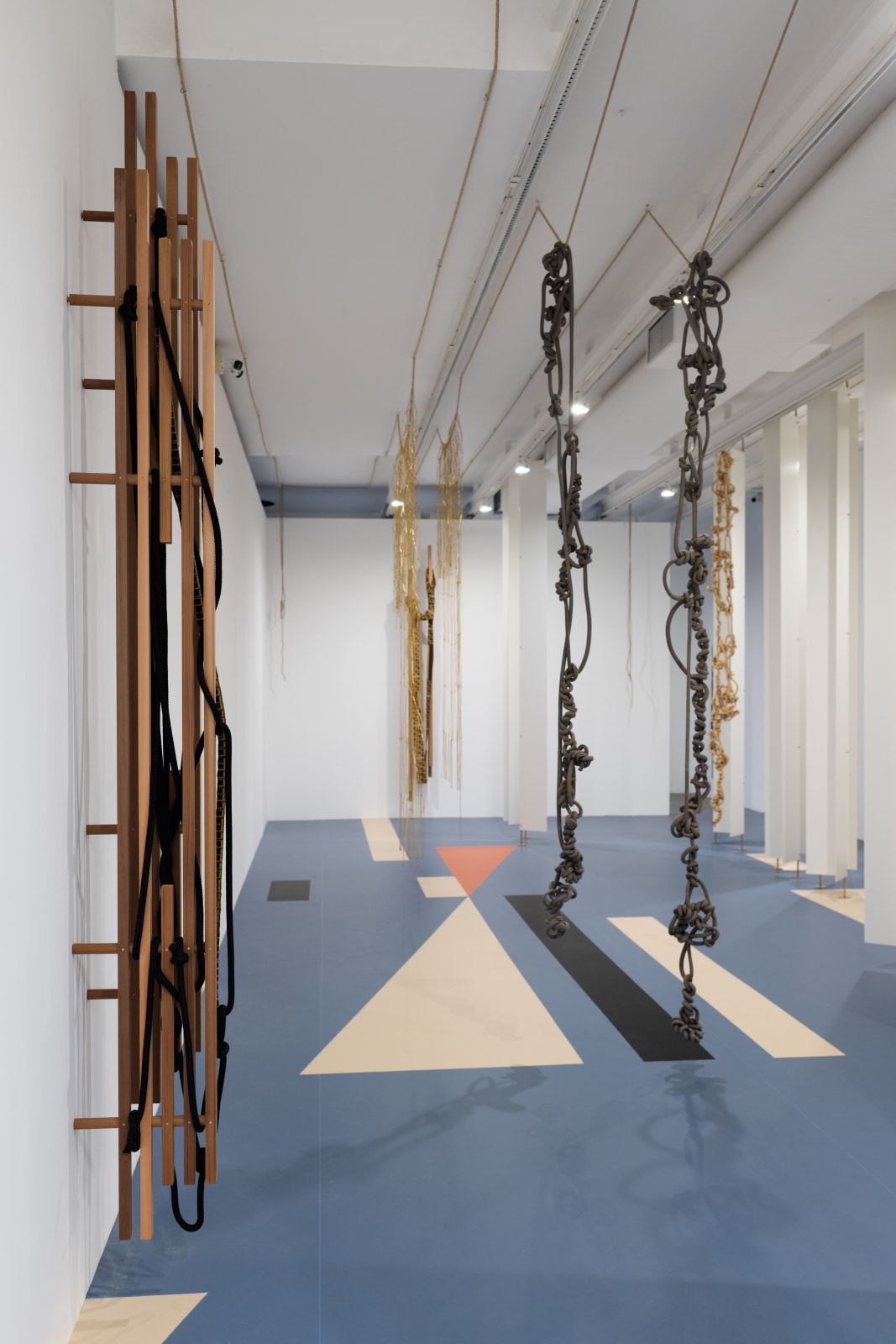
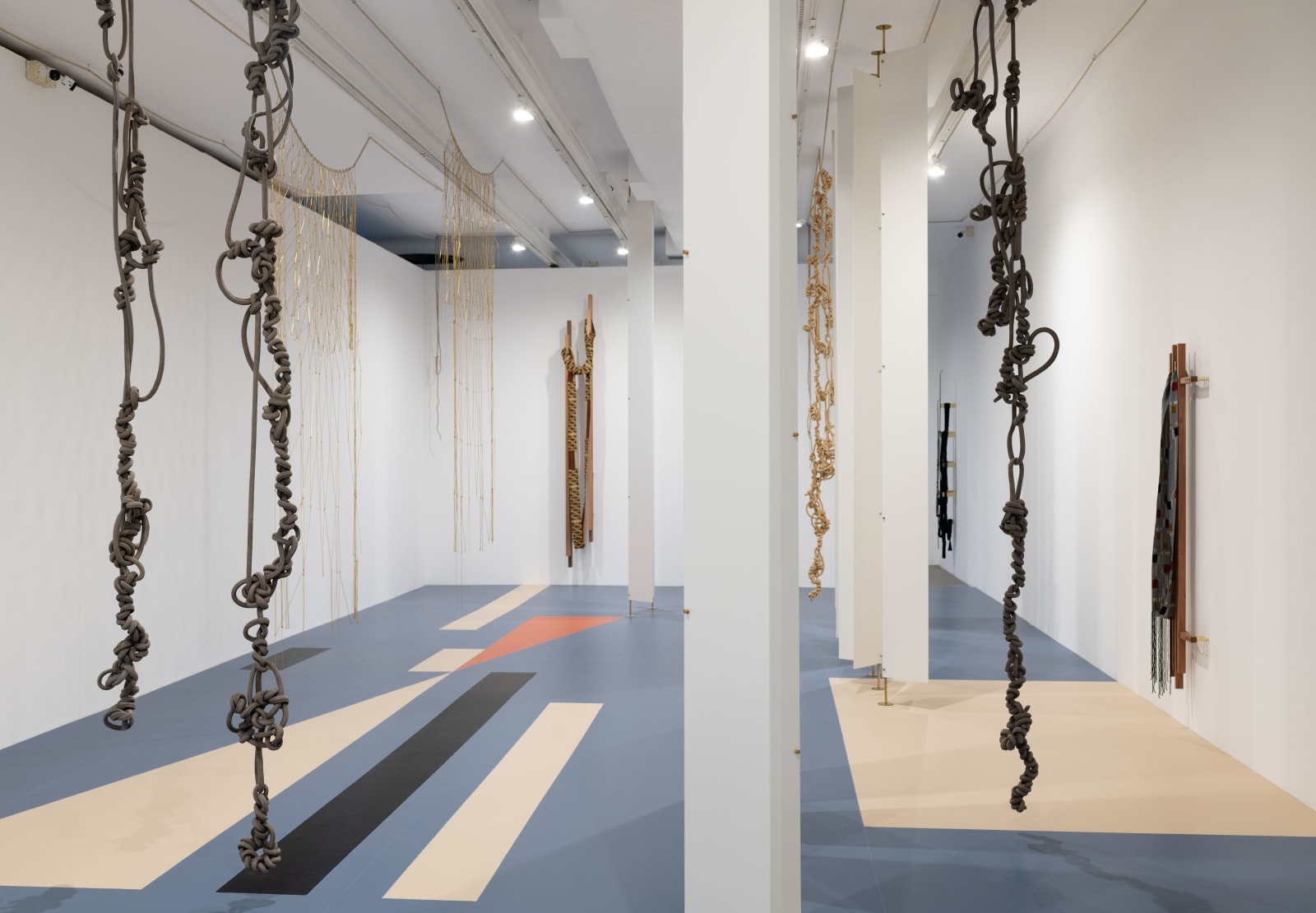
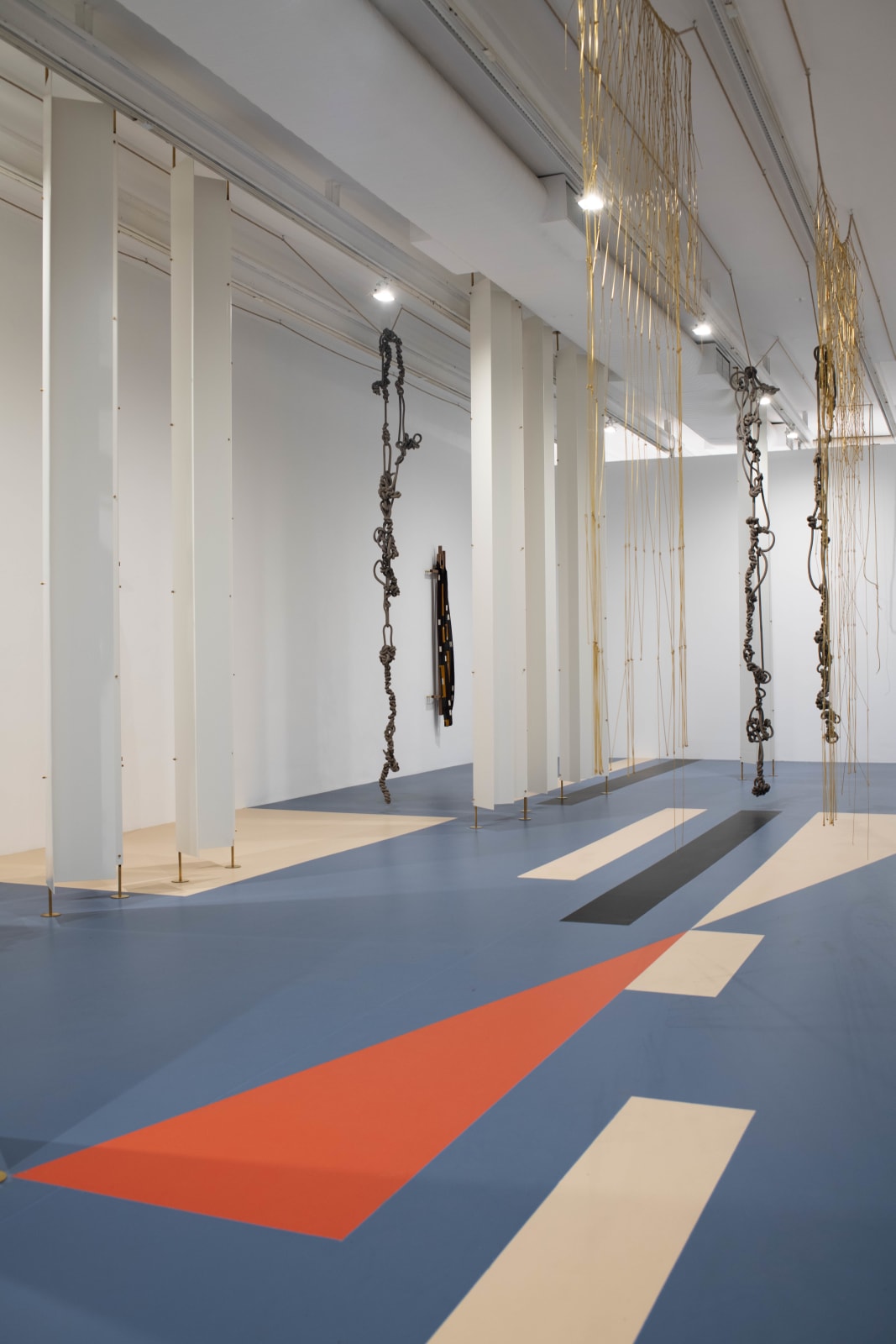
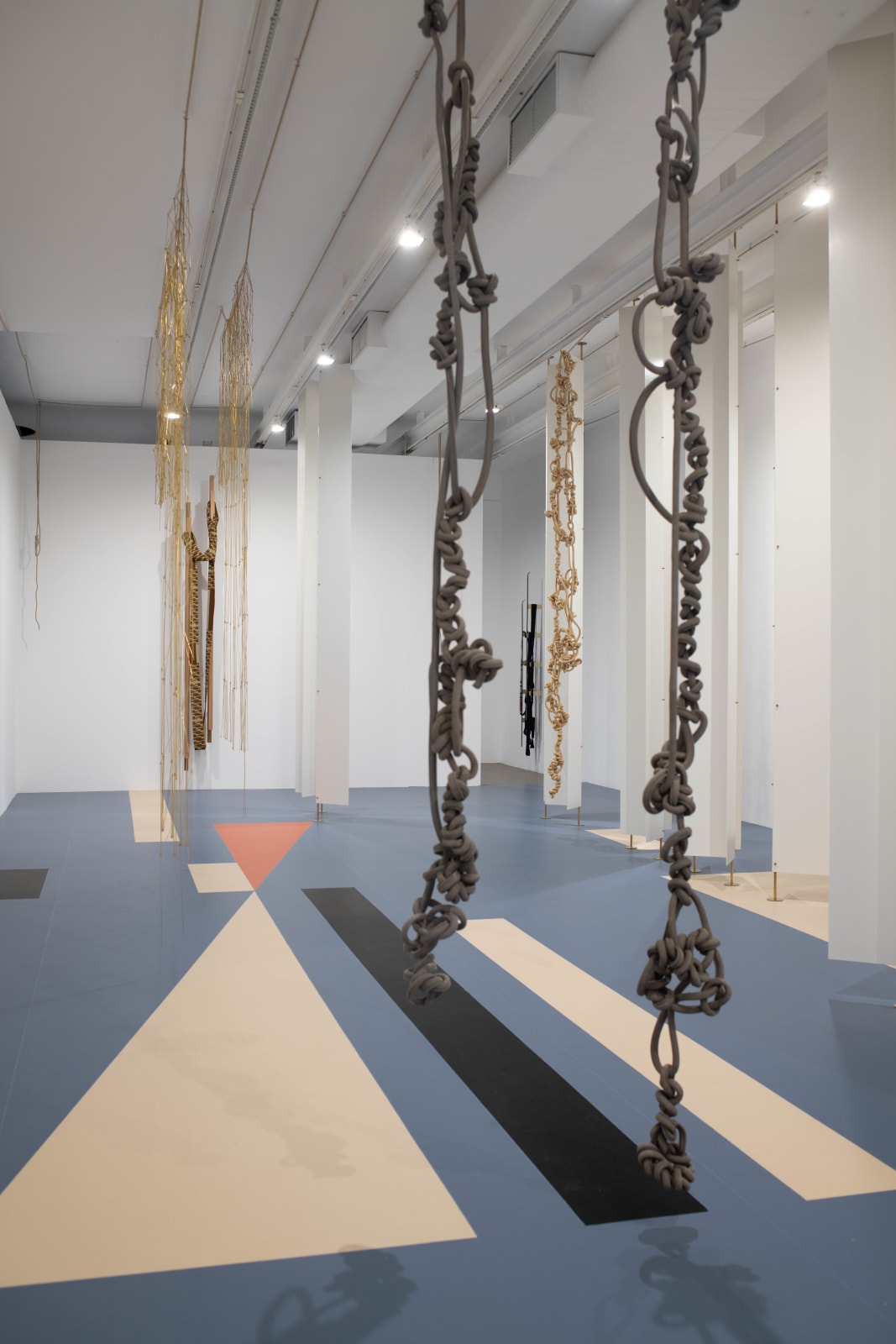
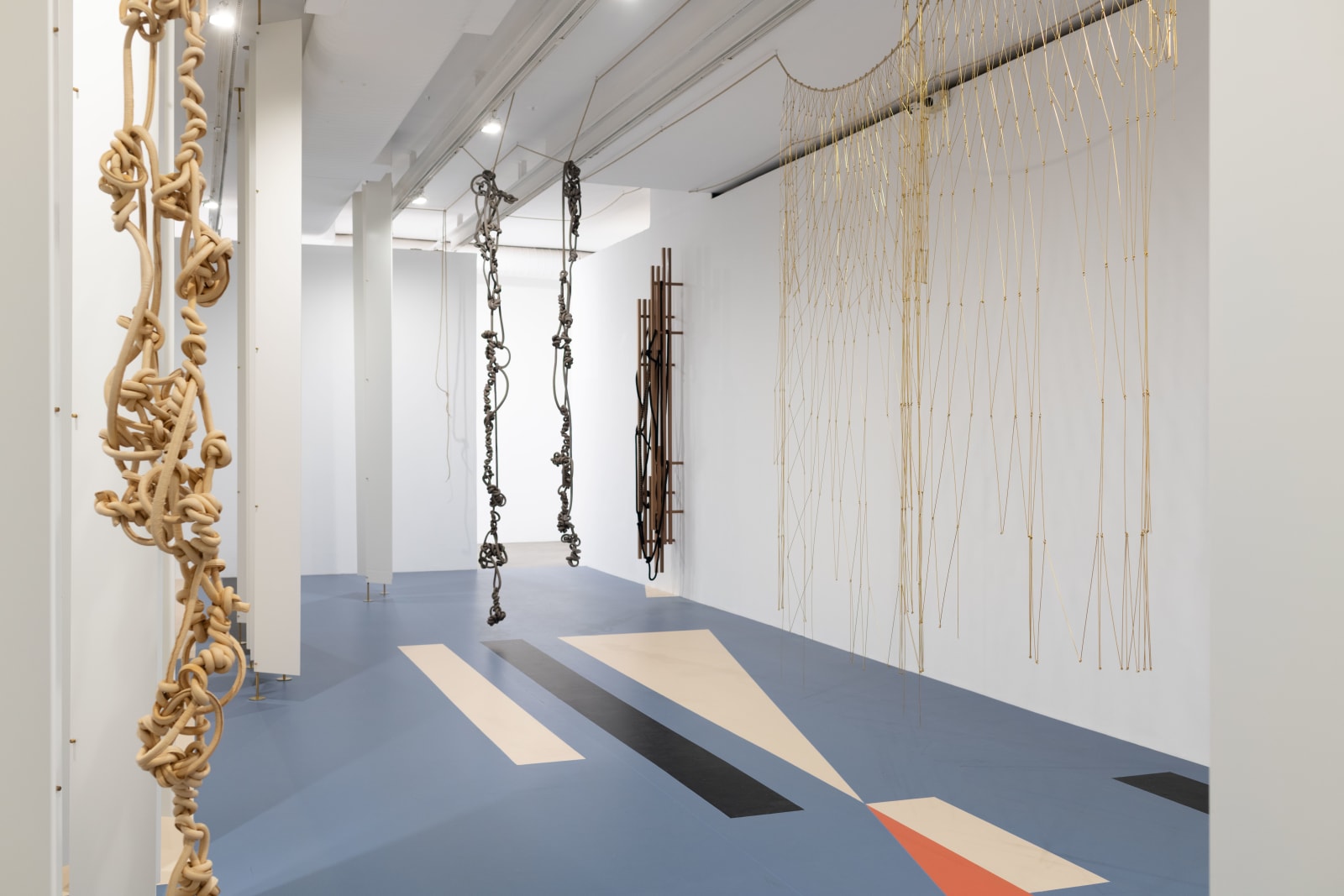
![Leonor Antunes Mira and Charlotte #1, 2025 miçangas de vidro, madeira de cerejeira e latão [glass beads, cherry wood and brass] 210 x 43 x 13 cm 82 5/8 x 16 7/8 x 5 1/8 in](https://artlogic-res.cloudinary.com/w_600,c_limit,f_auto,fl_lossy,q_auto/artlogicstorage/galerialuisastrina/images/view/226627b67b70ddddbcfea260ea1eae78j/luisastrina-leonor-antunes-mira-and-charlotte-1-2025.jpg)
![Leonor Antunes Sophie and Charlotte #1, 2025 miçangas de vidro, madeira de cerejeira e latão [glass beads, cherry wood and brass] 198 x 43 x 15 cm 78 x 16 7/8 x 5 7/8 in](https://artlogic-res.cloudinary.com/w_600,c_limit,f_auto,fl_lossy,q_auto/artlogicstorage/galerialuisastrina/images/view/2e442c0550d6ba1ef48da077e7148be2j/luisastrina-leonor-antunes-sophie-and-charlotte-1-2025.jpg)
![Leonor Antunes Sophie and Charlotte #2, 2025 miçangas de vidro, madeira de cedro, corda de nylon e latão [glass beads, cedar wood, nylon rope and brass] 330 x 30 x 40 cm 129 7/8 x 11 3/4 x 15 3/4 in](https://artlogic-res.cloudinary.com/w_600,c_limit,f_auto,fl_lossy,q_auto/artlogicstorage/galerialuisastrina/images/view/a51511d61520984e8568e757d0b55681j/luisastrina-leonor-antunes-sophie-and-charlotte-2-2025.jpg)
![Leonor Antunes discrepâncias com A.H. #1 e #2 [discrepancies with A.H #1 and #2], 2024 latão e corda de cânhamo [brass and hemp rope] 360 x 160 x 16 cm cada 141 3/4 x 63 x 6 1/4 in [each]](https://artlogic-res.cloudinary.com/w_600,c_limit,f_auto,fl_lossy,q_auto/artlogicstorage/galerialuisastrina/images/view/091b802b11a30700f005cdee6ecfcc53j/luisastrina-leonor-antunes-discrep-ncias-com-a.h.-1-e-2-discrepancies-with-a.h-1-and-2-2024.jpg)
![Leonor Antunes discrepâncias com M.S. #8 [discrepancies with M.S. #8 ], 2020 couro, corda de algodão e fio de nylon encerado [leather, cotton rope and waxed nylon thread] 350 cm | adaptável 137 3/4 in | adaptable](https://artlogic-res.cloudinary.com/w_600,c_limit,f_auto,fl_lossy,q_auto/artlogicstorage/galerialuisastrina/images/view/1c651c80ff64c4087a2a10d6c5c264cdj/luisastrina-leonor-antunes-discrep-ncias-com-m.s.-8-discrepancies-with-m.s.-8-2020.jpg)
![Leonor Antunes Shed, 2018 16 elementos; alumínio revestido e latão [16 elements; powder coated aluminum and brass] 430 cm | adaptável 169 1/4 in | adaptable](https://artlogic-res.cloudinary.com/w_600,c_limit,f_auto,fl_lossy,q_auto/artlogicstorage/galerialuisastrina/images/view/6331959eb2166aa1a64dbf7e9f8a8200j/luisastrina-leonor-antunes-shed-2018.jpg)
